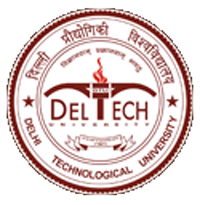Please use this identifier to cite or link to this item:
http://dspace.dtu.ac.in:8080/jspui/handle/repository/21625Full metadata record
| DC Field | Value | Language |
|---|---|---|
| dc.contributor.author | KUMAR, RAVISHANKAR | - |
| dc.date.accessioned | 2025-06-09T04:43:25Z | - |
| dc.date.available | 2025-06-09T04:43:25Z | - |
| dc.date.issued | 2025-06 | - |
| dc.identifier.uri | http://dspace.dtu.ac.in:8080/jspui/handle/repository/21625 | - |
| dc.description.abstract | Nipah virus, a pathogenic zoonotic virus belongs to genus Henipavirus and family Paramyxoviridae responsible for encephalitis and significant threat to global health due to its high death rate, limited therapeutic option, and possible to transmission by multiple mode. First outbreak identify in Malaysia and Singapore in year 1998 in around pig farm. Currently no FDA approved drugs available in market but several research and clinical trials is underdevelopment to discover medication on urgent basis for preventive action in future outbreak. It is type of zoonotic virus so it transmitted by mostly animals and most common animals are pigs, fruit bats, some time dogs and also transmitted by contaminated date, palm, and horse meat. Nipah virus structurally contain six protein, Fusion glycoprotein is one of them which is associate in viral entry into host cell by fusion with host cell membrane. Targeting fusion protein and understanding structure activity relationship with various potential phytochemicals is a promising strategy for antiviral drug development. In this studies, use of medicinal plant ‘Glycyrrhiza glabra’ which is usually known in india as a mulaithi and licorice for their medicinal value and their traditional uses in fever, sexual debility, cough, respiratory disorders, hyperdipsia, paralysis, stomach ulcers, rheumatism, skin disease and hemorrhagic disease because of various bioactive phytochemicals and selected 25 of them. Aim to investigate potential therapeutic drugs by molecular docking and ADMET studies. For In-silico investigation of fusion glycoprotein structure has downloaded from Protein Data Bank with ID 5EVM, a library of 25 phytochemicals from Glycyrrhiza glabra which identified by IMPPAT and downloaded by Pubchem and tool which use in study that is Biovia discovery studio, PyRx and SwissADME. The result shows that all phytochemicals are good binding affinity whereas top six phytochemicals on the basis of their binding affinity such as Hispaglabridin B, V Glabrene, Shinpterocarpin, 3-Hydroxyglabrol, Glychionide A and Licoflavone B and their binding affinity is -9.8, -9.6, -9.5, -9.4, and -9.4 respectively make them a potential therapeutic drug for inhibition of Nipah virus. | en_US |
| dc.language.iso | en | en_US |
| dc.relation.ispartofseries | TD-7891; | - |
| dc.subject | IN-SILICO INVESTIGATION | en_US |
| dc.subject | INHIBITOR PHYTOCHEMICALS | en_US |
| dc.subject | GLYCYRRHIZA GLABRA | en_US |
| dc.subject | FUSION GLYCOPROTEIN | en_US |
| dc.subject | NIPAH VIRUS | en_US |
| dc.title | IN-SILICO INVESTIGATION OF INHIBITOR PHYTOCHEMICALS OF GLYCYRRHIZA GLABRA TARGETING FUSION GLYCOPROTEIN OF NIPAH VIRUS | en_US |
| dc.type | Thesis | en_US |
| Appears in Collections: | M Sc | |
Files in This Item:
| File | Description | Size | Format | |
|---|---|---|---|---|
| Ravishankar kumar M.Sc..pdf | 3.58 MB | Adobe PDF | View/Open |
Items in DSpace are protected by copyright, with all rights reserved, unless otherwise indicated.



